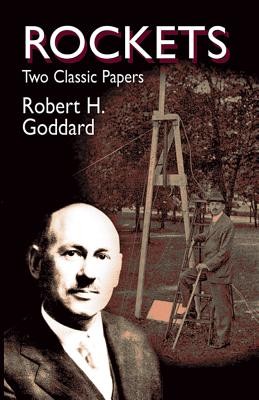
- We will send in 10–14 business days.
- Author: Robert Goddard
- Publisher: Dover Publications
- ISBN-10: 0486425371
- ISBN-13: 9780486425375
- Format: 17.4 x 20.3 x 0.9 cm, minkšti viršeliai
- Language: English
- SAVE -10% with code: EXTRA
Reviews
Description
Rockets, in the primitive form of fireworks, have existed since the Chinese invented them around the thirteenth century. But it was the work of American Robert Hutchings Goddard (1882-1945) and his development of liquid-fueled rockets that first produced a controlled rocket flight. Fascinated by rocketry since boyhood, Goddard designed, built, and launched the world's first liquid-fueled rocket in 1926. Ridiculed by the press for suggesting that rockets could be flown to the moon, he continued his experiments, supported partly by the Smithsonian Institution and defended by Charles Lindbergh. This book is comprised of two papers he wrote for the Smithsonian.
Among the most significant publications in the history of rockets and jet propulsion, these Smithsonian articles ― the first published in 1919 and the second in 1936 ― were issued at a time when little was known about these subjects. Goddard's first paper, A Method of Reaching Extreme Altitudes, addressed the theoretical possibility of achieving great ranges by means of well-designed rockets. It also demonstrated that fairly high jet velocities were attainable and described advances in the construction of a solid cartridge magazine-type rocket. The second paper served as a progress report and indicated what had been accomplished through experimentation.
Goddard went to to lay the foundations for the development of long-range rockets, missiles, satellites, and spaceflight. In fact, a liquid-fueled rocket constructed on principles he developed landed humans on the moon in 1969. Today, Goddard is widely recognized as the Father of American Rocketry. According to The New York Times, This . . . is certainly a book that the historian of rockets cannot ignore.
- Author: Robert Goddard
- Publisher: Dover Publications
- ISBN-10: 0486425371
- ISBN-13: 9780486425375
- Format: 17.4 x 20.3 x 0.9 cm, minkšti viršeliai
- Language: English English
Rockets, in the primitive form of fireworks, have existed since the Chinese invented them around the thirteenth century. But it was the work of American Robert Hutchings Goddard (1882-1945) and his development of liquid-fueled rockets that first produced a controlled rocket flight. Fascinated by rocketry since boyhood, Goddard designed, built, and launched the world's first liquid-fueled rocket in 1926. Ridiculed by the press for suggesting that rockets could be flown to the moon, he continued his experiments, supported partly by the Smithsonian Institution and defended by Charles Lindbergh. This book is comprised of two papers he wrote for the Smithsonian.
Among the most significant publications in the history of rockets and jet propulsion, these Smithsonian articles ― the first published in 1919 and the second in 1936 ― were issued at a time when little was known about these subjects. Goddard's first paper, A Method of Reaching Extreme Altitudes, addressed the theoretical possibility of achieving great ranges by means of well-designed rockets. It also demonstrated that fairly high jet velocities were attainable and described advances in the construction of a solid cartridge magazine-type rocket. The second paper served as a progress report and indicated what had been accomplished through experimentation.
Goddard went to to lay the foundations for the development of long-range rockets, missiles, satellites, and spaceflight. In fact, a liquid-fueled rocket constructed on principles he developed landed humans on the moon in 1969. Today, Goddard is widely recognized as the Father of American Rocketry. According to The New York Times, This . . . is certainly a book that the historian of rockets cannot ignore.


Reviews